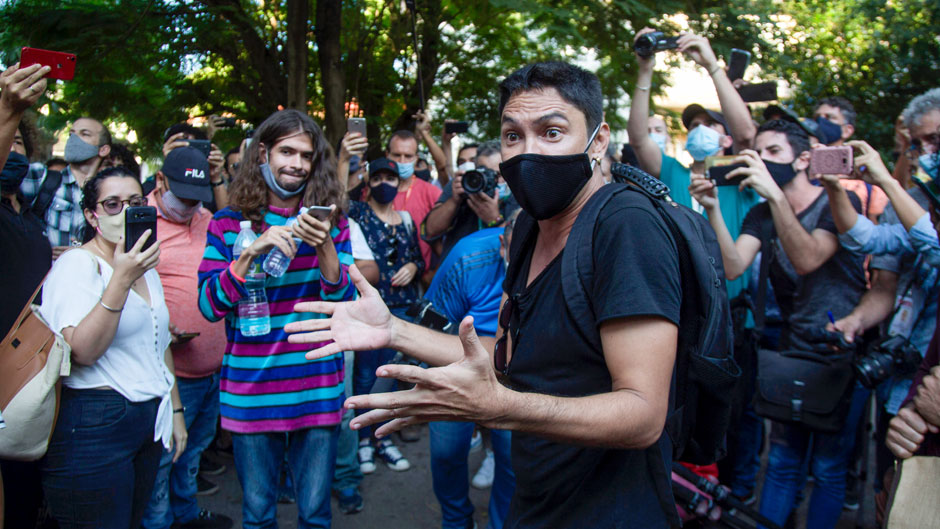More than 300 Cuban artists, intellectuals, and regular citizens held a protest outside the Ministry of Culture building in Havana last month to protest continued repression and censorship from the Cuban government.
The protest was sparked by the government’s crackdown on the San Isidro Movement, a group of dissident artists and activists. Many of them had started a hunger strike in protest of the arrest of a young rapper, Denis Solis Gonzalez, who was detained for posting a video of Cuban police entering his home without a warrant.
Learning of the Havana protest on the internet, and in solidarity with the artists, multiple protests by Cuban exiles were held in several cities. This included Miami, where hundreds of Cuban exiles gathered in front of the Versailles Restaurant in Little Havana.
Prominent artist Tania Bruguera was one of the many who took part in the demonstration in Havana that asked for artistic freedom, an end to police harassment and violence, and for their work as independent artists to be acknowledged and valued.
They have also scorned a government-imposed decree that legitimizes censorship of artists. Members of the San Isidro Movement have been vocal against this imposition, Decree 3-49, which was established in 2018, under the leadership of Cuba’s president, Miguel Diaz-Canel. The group gets its name from the neighborhood in Old Havana where they meet, an area that is mostly made up of Black residents who live in dilapidated housing.
The spontaneous protest has kindled a torrent of internet discussions and debates from the Cuban artistic community worldwide.
“The San Isidro Movement has been the spark that has ignited the dry grass of inconformity from many Cuban artists,” said Yoani Sanchez, well-known independent Cuban journalist and the first Distinguished Presidential Fellow at the University of Miami.
“Their work as creators and activists has shaken the conscience of musicians, filmmakers, writers, and those working in the arts who are tired of the censorship, the dogmatism, and the ideological imposition and intolerance on the cultural sector by the regime,” she noted.
Since the protest, several of the artists have been detained. Some were later released. Bruguera, who initially was invited to speak to Cuban authorities along with some other dissidents to establish a dialogue, is under house arrest, according to reports from her sister to several news organizations.
The Cuban government has renounced the protest as the work of the United States. On Twitter, Díaz-Canel called the protests “an imperialist show” orchestrated by the Trump Administration.
But many critics of the regime believe that the artists have taken advantage of a vulnerable time for the communist regime. The Cuban economy is in shambles and the COVID-19 pandemic has added additional stress. Internet access, although spotty, has facilitated getting messages out of the island. More than 60 percent of Cubans have access to a connection.
This has led to an increase in civic activism among groups advocating such causes as feminism, gay rights, and animal rights, says José Jasán Nieves, editor of El Toque (“The Touch”), an independent online publication.
“The flames ignited in this civic fire pit began last November but could extend to the next months and produce unprecedented situations in the island,” said Sanchez.

